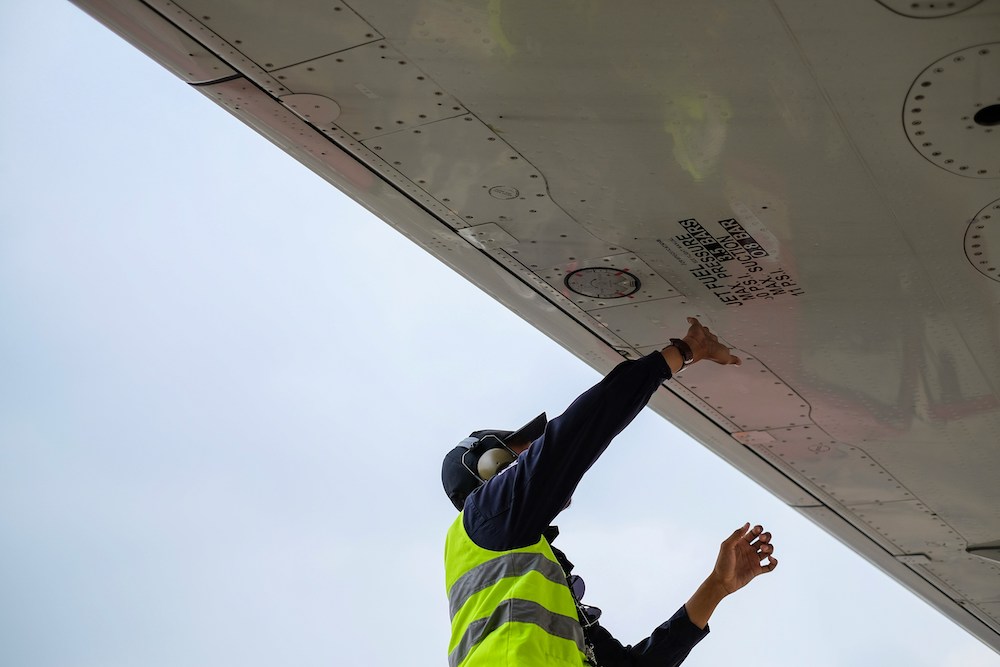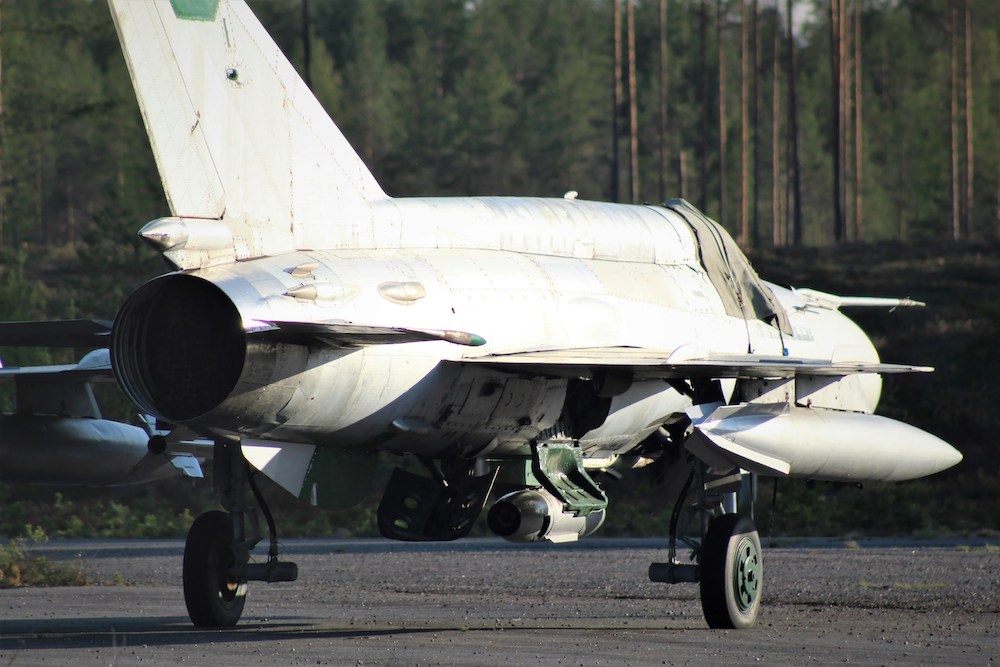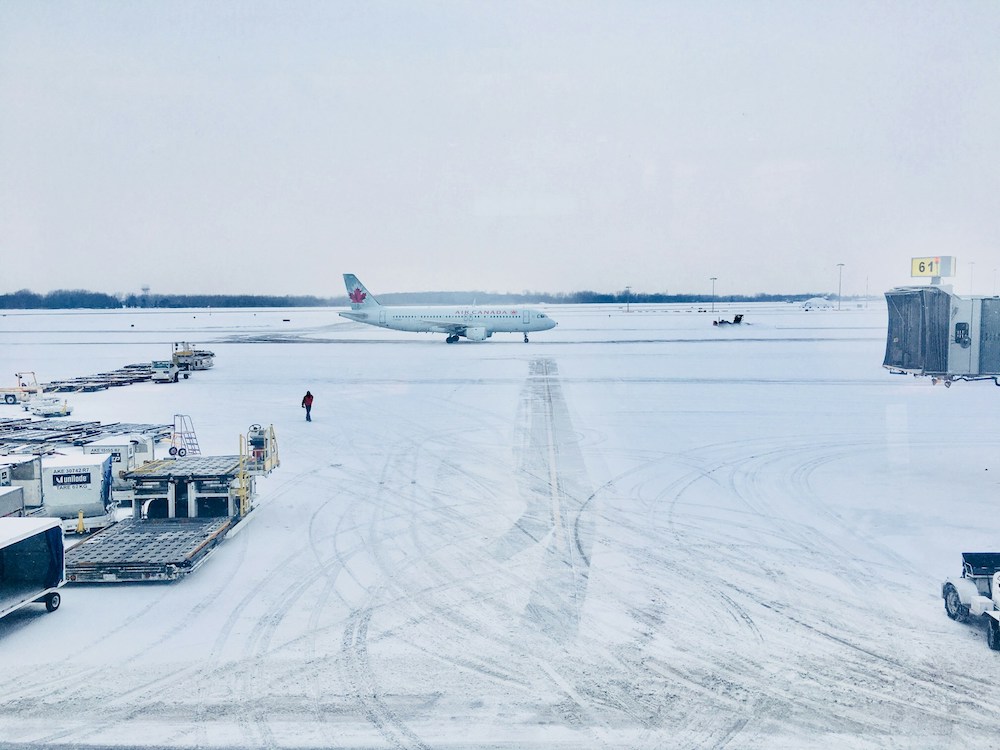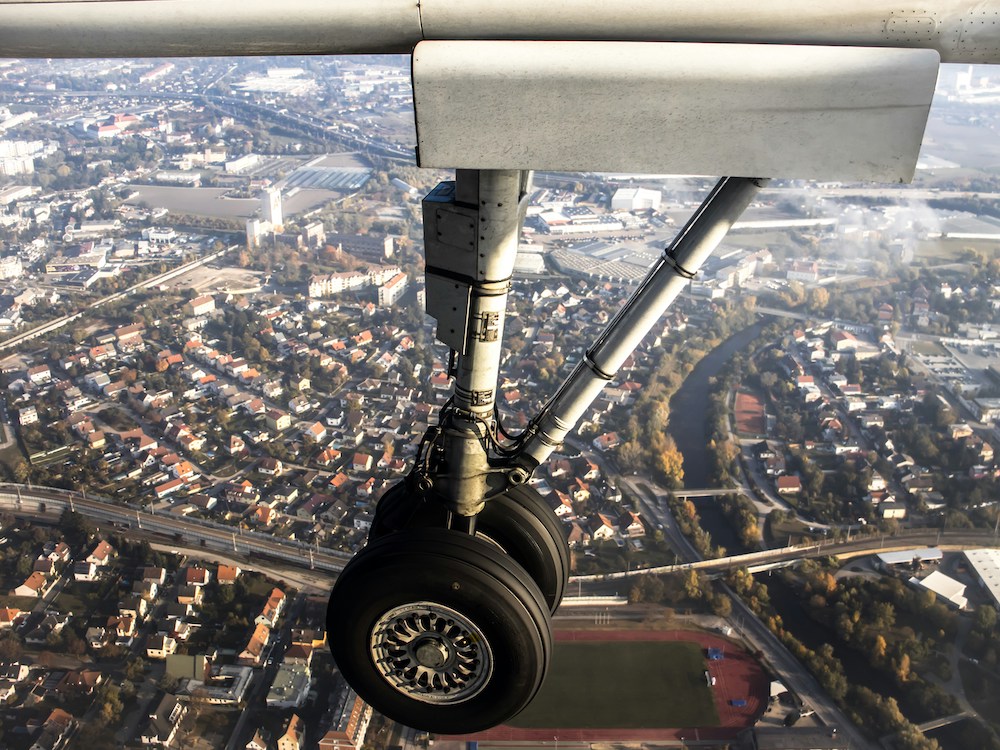
Recent data has shown a widening gap between the number of retiring aircraft maintenance technicians (AMTs) and those entering the field. Therefore, the aging workforce, lack of awareness, and perceived barriers are at the center of an impending mechanic and maintenance technician shortage.
As AMT recruitment continues to be an aviation industry priority heading into 2024, let’s address some of the most frequently asked questions (FAQs) of aviation industry members and future air maintenance technician candidates:
What are potential issues caused by the aircraft maintenance technician shortage?
The lack of supply of highly trained AMTs may lead to unintended issues for the aviation industry, including:
- Increased maintenance costs. Aviation industry members may face higher maintenance costs because of the impending AMT shortage. Longer turnaround times for scheduled maintenance can lead to operational inefficiencies and increased expenses.
- Operational delays and cancellations. Aviation industry members may struggle to keep aircraft in service because of the impending AMT shortage, which could affect passenger travel plans and overall customer satisfaction.
- Pressure on profitability. The aviation industry already runs on very thin profit margins, making it an incredibly difficult business. The AMT shortage could further worsen financial challenges by impacting operational reliability and efficiency.
- Quality and safety concerns. Overworked AMTs may face pressure to complete tasks quickly, potentially compromising safety. The AMT shortage could strain quality control processes, risking safety standards.
What can be done to address the impending aircraft maintenance technician shortage?
While the impending aircraft maintenance technician shortage presents challenges, proactive measures can help mitigate its impact and ensure a steady supply of skilled AMTs in the years to come.
Expand the Candidate Pool
Currently, most AMTs are white and male, with 7% being women and 45% being of races other than white. To overcome the AMT shortage, aviation industry members must engage in more outreach efforts to female and minority populations. Workforce recruitment with diversity at the forefront will be essential to the aviation industry moving forward, not only to broaden the scope of search for talent but also to provide companies with a competitive edge.
Reaching out to middle school and high school students to educate them about the exciting career possibilities in aviation maintenance can also help expand the candidate pool. Exposure to the aviation industry at a young age can ignite a lifelong interest in aviation and inspire future careers.
Collaborate and Break Down Silos
Aviation industry members (i.e., airlines, MROs, educational institutions, etc.) should collaborate to expand early access to aviation maintenance curriculums and training. This requires working with high schools, colleges, nonprofits, and elected officials to create pathways for aspiring AMTs.
Attractive Compensation and Benefits
The AMT shortage is already pushing up wages, making the profession more appealing to potential AMT candidates. However, as the cost of living continues to rise, aviation industry members must continue to offer competitive compensation packages to attract and retain skilled AMTs.
Invest in Training and Recruitment
Aviation industry members must invest in training programs to develop new AMTs and enhance the skills of existing ones. These programs include apprenticeships, on-the-job training, and partnerships with technical schools and colleges.
Investing in a team of professional recruiters is also essential to addressing staffing shortages. Recruiters understand how to collaborate with industry specialists to tap into a pool of skilled candidates while ensuring a strong workforce for the future.
Promote Industry Culture and Mentorship
Fostering a positive industry culture that values AMTs can encourage more young candidates to pursue aviation maintenance careers. A positive culture fosters a commitment to safety, boosts morale and motivation, reduces stress levels, encourages collaboration and open communication, and builds high-performing teams.
Mentorship also plays a critical role in the field of aviation maintenance, as mentors:
- Provide valuable guidance and skill development to new aviation maintenance professionals
- Reinforce safety protocols and emphasize best practices
- Open doors to career opportunities
- Offer encouragement, while building confidence and resilience
- Ensure continuity within the industry by building a legacy and providing knowledge transfer
Are there digital and AI-powered solutions for the aircraft maintenance technician shortage?
While using forward-thinking AI-based solutions may not play a large role in increasing the workforce, it can enable leaders to utilize the time of their existing teams more strategically. Example opportunities unlocked by AI include:
Lessening overstocking through AI-powered predictive analytics
Too much inventory increases not only upfront costs but also expenses related to ongoing maintenance. Using tools like ePlaneAI can help companies make data-informed purchasing decisions, reducing excess parts and the amount of manpower needed.
Reducing the number of unapproved aviation parts your fleets utilize
No company intends to purchase and install unapproved plane parts yet, as numerous news stories in 2023 showed, even large airlines can fall victim to bad actors and forged documents. This not only grounded planes, but wasted the time of aircraft maintenance technicians who had to overhaul the aircraft. AI has the ability to provide an extra layer of evaluating airworthiness certificates, even interfacing with those documented within the blockchain to confirm the accuracy of details.
Conducting predictive maintenance with greater frequency
As we explore in Aircraft Predictive Maintenance and Its Role in Reliability-Centered Maintenance (RCM), predictive maintenance leverages compiled data and sensor-based part monitoring to assess when parts may need additional servicing or replacing. In turn, aircraft maintenance technicians can proactively prevent part failures that may occur at inopportune times.
What are the qualifications and training required to become an Aircraft Maintenance Technician?
An AMT is a mechanic certified by the Federal Aviation Administration (FAA), based on personal knowledge gained through training and experience, which is demonstrated via successfully completed written, oral, and practical tests.
The Aviation Mechanic certificate has two (2) ratings, including the Airframe (A) and the Powerplant (P), which is commonly referred to as the A&P Certificate. To pursue this certificate, the candidate must be:
- At least 18 years old
- Able to read, write, speak, and understand the English language
- Able to pass all the prescribed tests within a 24-month period
- Able to meet the experience, knowledge, and skill requirements for at least one rating (i.e., airframe or powerplant)
The candidate must have:
- At least 18 months of practical experience with the procedures, practice, materials, tools, machines, and equipment generally used in constructing, maintaining, or altering an airframe or powerplant, appropriate to the rating sought; or
- 30 months of practical experience concurrently performing the duties appropriate to both the airframe and powerplant ratings
The candidate may also be eligible by:
- Graduating from an FAA-approved Aviation Maintenance Technician School (AMTS); or
- Completing the Joint Service Aviation Maintenance Technician Certification Council (JSAMTCC) training course for military personnel
The candidate must be familiar with:
- Title 14 of the Code of Federal Regulation (14 CFR) part 65, subpart D, Mechanics
- FAA published AMT handbooks
Finally, the candidate must pass the written, oral, and practical tests based on the aeronautical knowledge areas contained in the Aviation Mechanic General, Airframe, and Powerplant Airman Certification Standards. The written test must be taken before the oral and practical tests. The oral and practical tests are administered by a Designated Mechanic Examiner (DME).
What skills do successful Aircraft Maintenance Technicians possess?
Successful AMTs combine technical expertise, safety consciousness, and soft skills to keep aircraft safe and operational. The following are just some of the relevant skills:
- Aircraft systems knowledge. AMTs must understand various aircraft systems, including electrical, hydraulic, and pneumatic systems. Troubleshooting and repairing these systems are integral to their work.
- Safety awareness. Safety is paramount in aviation maintenance. AMTs must have a keen sense of safety protocols and risk mitigation.
- Attention to detail. Precision matters when working on aircraft. AMTs must meticulously follow procedures, ensuring accuracy in maintenance and repairs.
- Effective communication. Clear communication with colleagues, supervisors, and pilots is crucial. AMTs must convey technical information accurately and collaborate effectively.
- Problem-solving skills. AMTs diagnose issues, find solutions, and implement repairs. Critical thinking and adaptability are essential.
What are the challenges of becoming an Aircraft Maintenance Technician?
Some of the challenges of becoming an AMT include:
- Licensure requirements. The FAA mandates that anyone performing aircraft maintenance must be licensed or work under the supervision of a licensed AMT. Obtaining and maintaining this license can be a rigorous process, as detailed above.
- Limited work locations. AMTs may find themselves restricted to specific work locations, especially if they work for airlines or specific companies. This lack of mobility can be a drawback for some individuals.
- High-pressure environment. AMTs often work under tight deadlines during scheduled departures or emergency repairs. Balancing speed with attention to detail and safety is essential.
- Workplace hazards. The job involves lifting heavy objects and operating large power tools. Noise and vibration are common.
- Shift work. AMTs often work full time on rotating 8-hour shifts. Overtime and weekend work are common.
What are the benefits of becoming an Aircraft Maintenance Technician?
Some of the benefits of becoming an AMT include:
- Job outlook. The demand for AMTs remains strong due to the popularity of air travel. Over the next decade, the U.S. Bureau of Labor Statistics predicts an 11% growth in available AMT jobs, creating more than 17,000 new positions.
- Salary. According to the U.S. Bureau of Labor Statistics, the median pay for an AMT is $70,740 per year or $34.01 per hour.
- Safety contribution. AMTs work in highly technical specialty occupations involving the continued operational safety of aviation products and articles, keeping U.S. registered aircraft operating safety and efficiently.
- Highly transferable skills. AMTs hold highly transferable skills that can be used in a broad range of industries. Career opportunities in the aviation industry, however, include employment at airlines, fixed base operators (FBOs), manufacturers, maintenance and repair stations (MROs), aviation maintenance schools, commercial/corporate organizations, and general aviation. Specialty fields further include avionics, balloons and airships, rotorcraft, and unmanned aircraft systems.
- Hands-on work. AMTs enjoy working with their hands and solving problems. They spend their days inspecting, repairing, and maintaining aircraft.
The Aviation Industry is at a Turning Point
About 12,800 openings for AMTs are projected each year, on average, over the next decade. Many of these openings are expected to result from the need to replace workers who transfer to different occupations or retire.
The aviation industry is an essential part of the global economy, transporting people and goods across the world, therefore, addressing the AMT shortage is crucial for maintaining safe, efficient, and reliable air travel.
Industry collaboration, training programs, and recruitment efforts are essential to mitigate its impact. Meanwhile, AI-driven solutions like ePlaneAI can lessen the strain on existing maintenance technician teams, enabling them to make a greater overall impact.
By Katarzyna Szwed-Carlson
Kasia Szwed-Carlson is an expert in the aviation industry with 15 years of experience working in flight operations management and training leadership roles.



